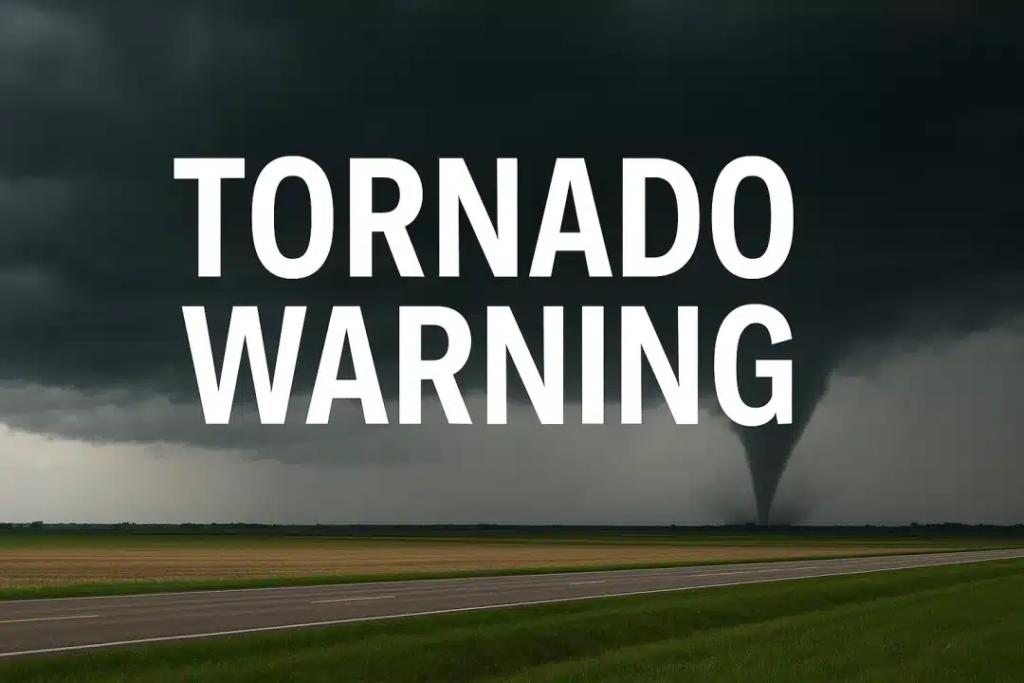
Severe storms are sweeping across the Midwest, prompting the National Weather Service (NWS) to issue urgent tornado warnings for multiple states. As powerful thunderstorms bring the potential for destructive winds, large hail, and life-threatening tornadoes, communities from Minnesota to Missouri are bracing for impact. With reports of significant damage already emerging, residents are urged to stay vigilant and prepared. This article explores the latest developments, the risks at hand, and how Midwesterners can stay safe during this dangerous weather event.
A Dangerous Weather System Hits the Midwest
The Midwest is no stranger to severe weather, but the current storm system is raising alarms due to its intensity and scope. On May 31, 2025, the NWS issued tornado warnings across parts of Minnesota, Iowa, Wisconsin, and northern Missouri, with severe thunderstorm warnings extending to Illinois, Indiana, and Kentucky. The Storm Prediction Center (SPC) has classified parts of the Upper Midwest, including Minneapolis, St. Paul, and Des Moines, under a Level 4 out of 5 risk for severe weather, indicating a high likelihood of destructive storms. This is a rare designation, signaling the potential for long-lived, intense tornadoes and widespread damage.
According to the NWS, the storms are driven by a potent combination of warm, moist air from the Gulf of Mexico colliding with a strong cold front moving through the region. This clash creates ideal conditions for supercell thunderstorms, which can spawn tornadoes, produce hail as large as baseballs, and unleash wind gusts exceeding 75 mph. The storms are expected to intensify in the afternoon and evening, posing the greatest threat during these hours.
Tornadoes and Damage Reports So Far
While the full extent of the damage is still unfolding, early reports indicate that the storms have already caused significant disruption. In western Minnesota, a confirmed tornado touched down near the town of Redwood Falls, damaging homes and uprooting trees. In Iowa, severe thunderstorms dumped egg-sized hail, shattering car windshields and damaging crops. Power outages have affected tens of thousands of households, with Indiana reporting over 100,000 customers without electricity due to downed power lines.
In Missouri, an EF-1 tornado struck Vernon County earlier this week, knocking over eight train carriages and damaging multiple businesses. The NWS’s Springfield office reported that the tornado caused no injuries, but the destruction serves as a stark reminder of the storms’ potential. Similarly, in Kentucky, a tornado injured four people in the western part of the state, prompting Governor Andy Beshear to declare a state of emergency to mobilize resources for recovery efforts.
The storms are also bringing heavy rainfall, raising concerns about flash flooding. The NWS in Memphis has warned of “generational flooding” in northwestern Tennessee, where rainfall totals could exceed a foot in some areas. This level of flooding is described as a “once-in-a-lifetime” event, with areas that have never flooded before now at risk. In Arkansas, the NWS issued a “particularly dangerous situation” flash flood watch, urging residents to avoid flooded roadways and seek higher ground.
Why These Storms Are So Severe
The severity of this weather event is amplified by broader environmental factors. Climate change is contributing to more extreme weather patterns, with warmer air holding more moisture and fueling intense storms. A recent analysis by Climate Central found that heavy precipitation events are becoming more frequent across the U.S., increasing the risk of flooding and tornadoes. This trend is particularly evident in the Midwest, where spring and early summer are peak seasons for severe weather.
The current storm system is also notable for its persistence. Unlike typical thunderstorms that pass quickly, this system is expected to stall over the Midwest, bringing multiple rounds of severe weather through the weekend. This prolonged activity heightens the risk of widespread damage and complicates recovery efforts in already-affected areas.
How Communities Are Responding
State and local officials are taking swift action to protect residents. In Minnesota, emergency management teams are distributing sandbags to combat potential flooding, while in Iowa, shelters have been opened for those displaced by the storms. Kentucky’s Governor Beshear has activated the National Guard to assist with debris removal and rescue operations, emphasizing the need for immediate action. “This is one of the most serious weather events we’ve faced,” Beshear said on social media, urging residents to follow local guidance.
In Indiana, Governor Mike Braun has deployed 50 National Guard members to support 41 counties affected by the storms. The state of emergency declaration has unlocked funding to aid recovery efforts, particularly in areas where homes and businesses have been destroyed. Meanwhile, in Arkansas, Governor Sarah Huckabee Sanders has called for federal assistance to address the extensive damage caused by tornadoes and flooding.
Residents are also taking proactive steps. In Minneapolis, schools have canceled outdoor activities, and community centers are serving as safe havens for those under tornado warnings. Social media posts show locals sharing real-time updates, with some capturing dramatic footage of funnel clouds and lightning strikes. “It’s scary, but we’re ready,” said one Minneapolis resident on X, reflecting the community’s resilience in the face of danger.

Safety Tips for Residents
With the threat of severe storms ongoing, safety is the top priority. The NWS and emergency officials have shared critical advice for Midwesterners:
- Seek Shelter Immediately: If a tornado warning is issued, move to the lowest level of a sturdy building, preferably a basement or an interior room without windows. Avoid mobile homes, as they are particularly vulnerable to tornadoes.
- Stay Informed: Monitor local weather alerts through a weather radio, smartphone app, or trusted news sources like the National Weather Service or AccuWeather.
- Prepare for Flooding: Avoid driving through flooded roads, as even shallow water can sweep vehicles away. Have an emergency kit ready with essentials like water, food, and first-aid supplies.
- Protect Against Debris: Wear sturdy shoes and clothing to protect against flying debris, and consider using a helmet if available.
- Stay Updated: Severe weather can change rapidly. Check for updates from reliable sources to stay ahead of the storm.
Looking Ahead: A Challenging Recovery
As the storms continue, the Midwest faces a long road to recovery. The combination of tornadoes, flooding, and power outages has strained local resources, and the economic toll is expected to be significant. The March 2025 tornado outbreak, which caused $6.25 billion in damages, serves as a sobering precedent. Rural communities, in particular, may struggle to secure the attention and funding needed for rebuilding, as national media often shifts focus quickly.
The NWS is also facing challenges, with recent workforce reductions impacting its ability to maintain regular operations. Despite these setbacks, the agency is coordinating with neighboring offices to ensure accurate forecasting and timely warnings. Community resilience will be key, as residents come together to clear debris, support neighbors, and rebuild.
A Call to Stay Vigilant
The Midwest’s severe weather outbreak is a stark reminder of nature’s power and unpredictability. As tornado warnings and severe storms continue to threaten widespread damage, residents are urged to stay alert and follow safety guidelines. By preparing now and staying informed, communities can minimize the risks and emerge stronger.
For the latest updates, visit the National Weather Service or follow local news outlets. If you’re in an affected area, share this information with family and friends to ensure everyone stays safe. Together, the Midwest can weather this storm and come out on the other side.
Sources: National Weather Service, AccuWeather, The New York Times
Also Read :- Wildfire Risks Rise in California, Prompting Evacuation Alerts in Multiple Counties






